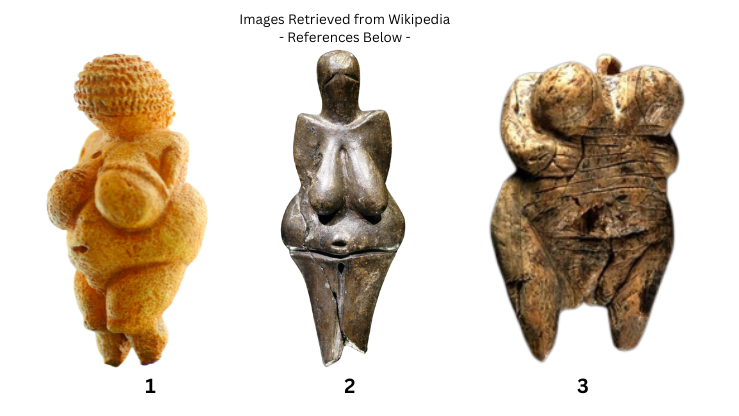The History of Obesity
- Matt Gable

- Sep 19, 2024
- 4 min read
Updated: Sep 30, 2024

When Did Obesity Begin?
It’s easy to assume that obesity has cropped up within the last few hundred years. These days, obesity is tied to fast food, lack of exercise, and our fast-paced lifestyles. But believe it or not, obesity and the health challenges that come with it have been around for thousands of years.

Venus of Willendorf This small statue was found in a village in lower Austria. It's believed that it was created 29,500 years ago [1].
Found in the Czech Republic, this statue is estimated to be 27,000-31,000 years old [2].
This small statue was found in a cave in Germany and is believed to be between 40,000-42,000 years old [3].
Scholars believe that each of these small statues could be an early representation of obesity. This could then suggest that obesity may have symbolised fertility, health, and survival in early human cultures.
Although we can only guess what people thought about body size 40,000 years ago, we do know that humans have been dealing with weight in one way or another for thousands of years.
When Was Obesity Looked at as Being Unhealthy?
In ancient Egypt, obesity was recognised as a health issue. The Egyptians even had medical texts that talked about the dangers of being overweight [4]. The Ebers Papyrus, the oldest known medical document dating back to 1550 BCE, includes descriptions of health conditions relating to diet and lifestyle [5].
In ancient Greece, a physician and philosopher named Hippocrates, also known as the “father of medicine”, viewed obesity as an illness that could lead to other problems [6]. Even back then, people were already drawing connections between body size and health.
Where Did the Word "Obesity" Come From?
While obesity has been around for ages, the word “obesity” itself is much newer. It comes from the Latin word obesus, meaning "fat". This term started being used in the 17th century by an English physician named Tobias Venner [7]. By the 18th and 19th centuries, obesity was a term recognised in the medical world, though it wasn’t the public health issue we talk about today.
Famous Faces of Obesity in History
There have been some big names in history who were known for their size. If I think of history and obesity, the first person I would think of is England's King Henry VIII [8]. Towards the end of his life, he was said to weigh over 180kg (400lbs). His obesity wasn’t just an appearance issue, it led to serious health problems, including gout, leg ulcers, and a whole lot of physical pain.
Another historical figure was Louis VI of France, who was also known as "Louis the Fat" [9]. His obesity was so severe that it affected his ability to lead troops into battle. Imagine trying to rule a country and deal with the physical limitations brought on by weight related health problems.
Obesity Today and What's Changed
Over the past century or so, our food environment has changed drastically. Processed, calorie dense foods are more accessible and affordable than ever before. We have increasingly sedentary lifestyles, where we’re more likely to sit in front of a screen all day than engage in physical activity.
While we have a better understanding of obesity than ever before, managing it remains a complex task, one that involves education, access to healthier food, encouraging physical activity, and understanding the underlying genetic and medical factors. The more we understand about it, the better equipped we are to make changes that can improve both individual health and public health outcomes.
The Role of an Underactive Thyroid
Centuries ago, people suffering from an underactive thyroid wouldn’t have understood what was happening to their bodies. They may have gained weight, felt tired all the time, and experienced other symptoms without ever realising it was linked to a hormonal issue. It wasn’t until the 20th century that we started to get a better understanding of the thyroid and its role in metabolism.
Knowing this, it’s interesting to think about how many people throughout history might have struggled with obesity due to thyroid issues, without anyone realising it. It’s a reminder that obesity is more complicated than simply eating too much or exercising too little.
We Now Know More Than Ever
Obesity has a long, complex history that stretches far beyond what most people realise. From ancient civilisations of up to 40,000 years ago to historical figures like Henry VIII, obesity is nothing new. The more we learn about obesity, the better.
If you’re interested in learning more about obesity and health, I’ve written more blogs that might interest you:
Thanks for reading, leave a comment below or message me directly for any questions.




link link link link link link link link link link link link link link link link link link link link link link link link link link link link link link link link link link link link link link link link link link link link link link link link link link link link link link link link link link link link link link link link link link link link link link link link link link link link link link link link link link link link link link link link link link link link link link link link link link link link link link link link link link link link link link link link link link